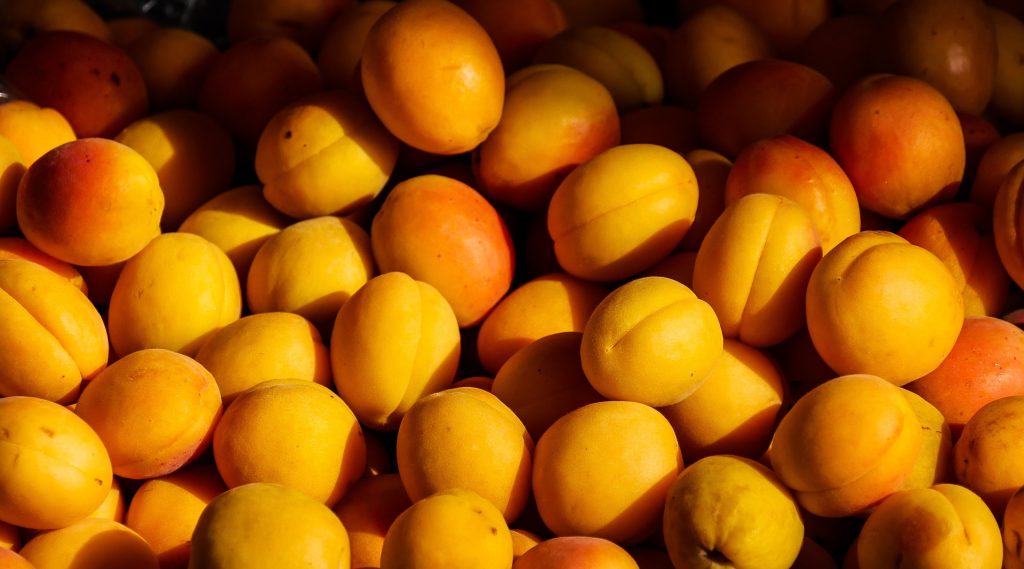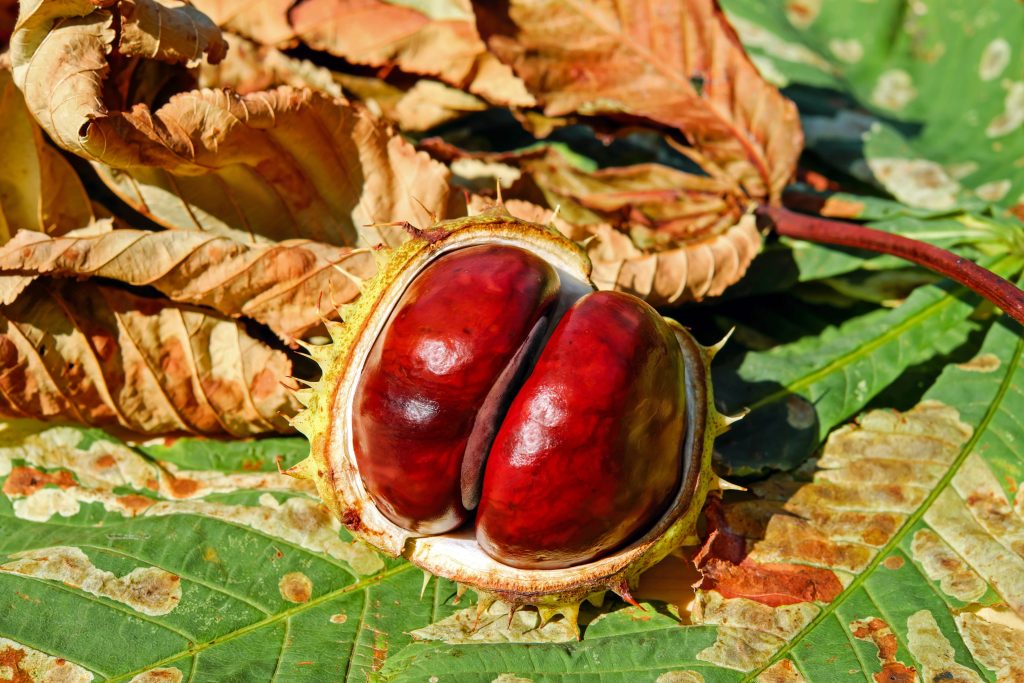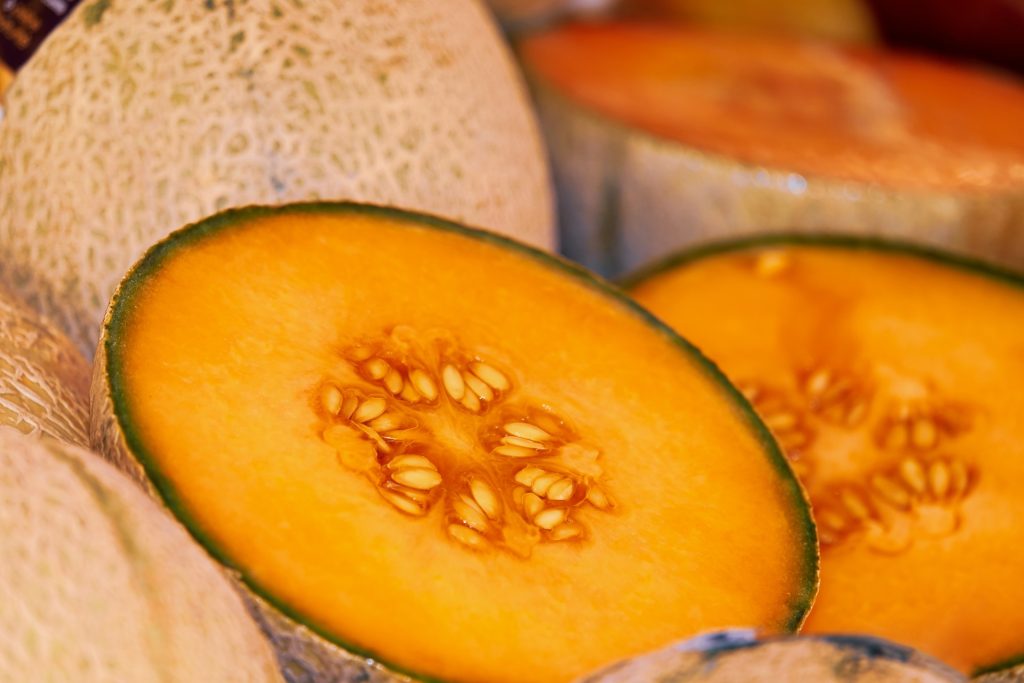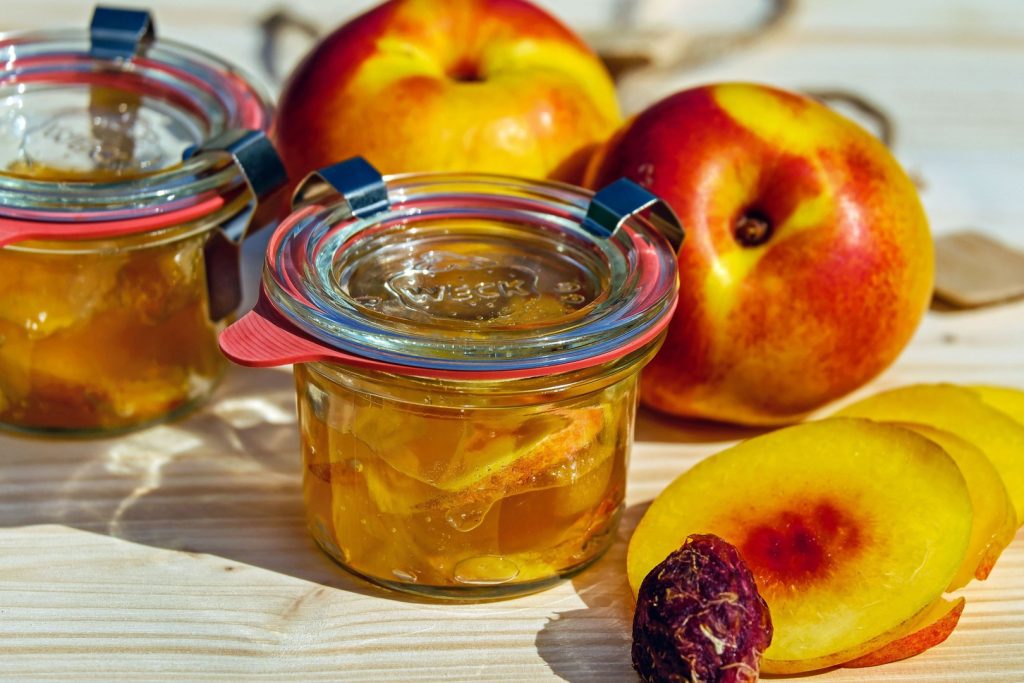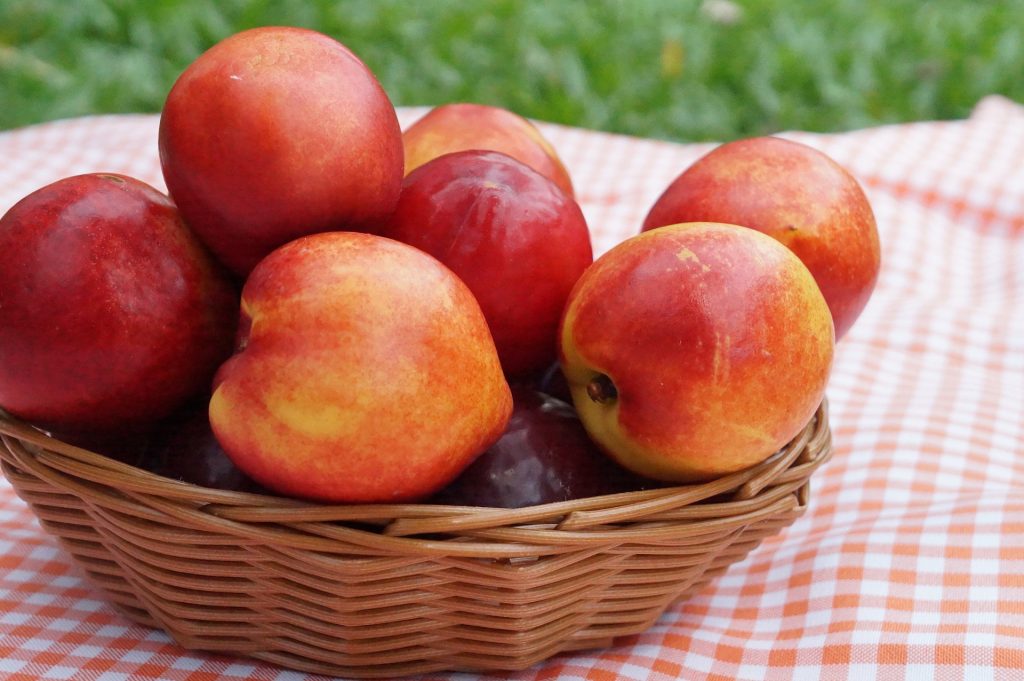Blog
Find articles that matter. From trading to shipping, trends to valuable goods, you can deep dive into everything you need.
Latest Posts
Blog
Turkey and China are two countries that are constantly developing their trade relations. With each passing year, Turkey exports more products to China and establishes a long-lasting bond. Especially after China’s decision to include Turkey in the Belt and Road Initiative, the relations between the two countries are expected to improve even further. This will also positively impact the trade between them and make the process even easier.
Since both countries are determined to improve their trade, importing products from Turkey to China can be quite profitable. In this article, we are exploring the products you can import from Turkey to China that have the most potential in the current situation. We have gathered some of the products that were listed in the “Export Potential Map” of ITC to give you an overview of the products with the most potential. Let’s take a look at all the products you can consider importing from Turkey.
Food
The food sector is one of the sectors that come forth when it comes to Turkey’s exports to China. In fact, in the January-October period of 2021, the food exports of Turkey to China increased by 86%. Turkey received 302 million dollars of income from its food exports during that period. This is a significant increase compared to the year before.
Turkey is planning to increase its food exports by over 1 billion dollars. Therefore, it is safe to say that Turkey seems to be a great market for Chinese importers going into the future as the relations will be improving even further.
Dairy Products
Based on the export figures for 2021, dairy products were the most imported food products from Turkey to China. In fact, Turkey generated 51 million dollars from its dairy products exports. Turkey produces a wide range of dairy products some of which cannot be found in other countries.
Due to providing a wide selection of high-quality dairy products, Turkey is often preferred. Moreover, Turkey is the ninth country when it comes to cow’s milk production in the world. The dairy products Turkey exports the most do not only include milk, cheese and butter but also products such as milk powder, whey powder and mild cream cheese.
Canned Food
Another food product that came to the fore within the exports of the same period was canned food. Canned food is highly preferred in the modern and busy world due to making preparing meals quite easy. Turkey exported canned food worth 50 million dollars within the same period of 2021. Turkey exports canned fruits and vegetables along with canned meat products such as canned chicken, canned chicken salami and canned chicken sausage.
Vegetable Oil
The vegetable oil sector was another top sector that exported the most to China. Turkey gained 32 million dollars from its vegetable oil exports in a 10-month period in 2021. Vegetable oil production is quite developed in Turkey. Especially sunflower oil and olive oil production have an important part in vegetable oil production in the country.
Motor Vehicles and Parts
Motor vehicles were undoubtedly one of the top export products of Turkey in 2021. The country earned 2 billion 595 million dollars from motor vehicle exports in the same year. Turkey is a very popular country in terms of motor vehicles and exports to the countries such as Germany, the United States and England the most. Aside from motor vehicles, Turkey exports motors which is another product in this category that is high in demand.
Electronic Parts
The electric-electronic sector is a forerunner among the exports of Turkey. In 2021, Turkey’s electric-electronic exports increased by 28.3%. From this export, Turkey generated 14 billion dollars of income. While the country exported these products to many different countries such as Italy, Russia and the United States, China stands out as a country with great potential. According to ITC’s “Export Potential Map”, electronic products are among the products that have the most potential in being exported to China from Turkey.
Sanitary Products
Sanitary products have been at the center of attention in the last couple of years, especially with the Covid-19 pandemic. During this time, Turkey has proven its success in the healthcare sector. The country not only provided its citizens with more than enough sanitary products such as medical masks and disinfectants but also exported them to other countries that were suffering from a shortage of sanitary supplies.
Medical Mask
According to TUIK, Turkey’s exports of medical masks rose 123 times in 2020, during the epidemic. The country generated 216.8 million dollars from medical mask exports. Even though the exports are not as high, Turkey is certainly one of the first countries that come to mind when it comes to exporting medical masks.
Disinfectant
Similar to the medical mask, disinfectant exports increased significantly after the emergence of the Covid-19 epidemic. Showcasing a 126% increase in exports in 2020, Turkey generated 521.5 million dollars from the export of disinfectants. It seems that disinfectants will stay in demand for a while even though they are not as popular as they were during the pandemic.
Import from Turkey to China with Ease
The import process can be complicated and you might not even know where to start. Every country has different laws and regulations when it comes to international trade. By working with Turkish Goods, you can eliminate all the problems and easily import over 1000 products from Turkey.
Our team of experts will provide support in 13 languages and take care of the entire process. The only thing you need to do is choose the products that you wish to import from Turkey and contact us to get the best price offer in 48 hours. We will safely deliver all the products you demanded anywhere in the world. Whether you want to import by sea, air or land, we offer the best options that are suitable for your situation. A safe and easy import process is possible with Turkish Goods.
A certificate of origin (CO) is among the most important international trade terms. In this article, we will examine this term in detail. Below you can find all the details about how the certificate of origin works.
What is a Certificate of Origin?
A certificate of origin verifies the country of origin of a product. It indicates the place of manufacture and processing of the product. The CO is essential to the import process. Customs offices of countries usually need this document as an integral part of the customs clearance process. The certificate of origin specifies details about the product, destination, and country of export.
Who Issues the Certificate of Origin?
A certificate of origin is vital to global business. Importers and exporters have been using this document since 1898. Different countries rely on a network of chambers of commerce to create this document. The International Certificate of Origin Council of the International Chamber of Commerce serves this purpose. This council supports the position of the chambers of commerce. Besides, the ICC has established a set of procedures for the compliant issue of COs. ICC's Certificates of Origin Guidelines assist chambers of commerce in this regard. As a result, the chamber of commerce of the relevant country usually issues the certificate of origin.
Types of Certificates of Origin
There is no standard form of a certificate of origin. However, there are two basic types of COs.
Non-Preferential Certificate of Origin
A non-preferential certificate of origin confirms that the products are not subject to preferential treatment. Another name for this type of document is "normal CO." A non-preferential CO is one of the basic documents that chambers of commerce can issue.
Preferential Certificate of Origin
Sometimes goods are subject to discounted tariffs and exemptions. Preferential COs are essential if the goods are going to a country that provides these privileges. Relevant institutions can issue preferential COs for target countries where the Free Trade Agreement (FTA) is in effect.
Importance of Certificate of Origin
When moving goods across borders, the certificate of origin is essential. It proves the place of manufacture of the goods. Hence, it is vital to make sure that the country of origin is obvious. Many cross-border treaties require a CO. Because this document indicates whether the products are suitable for import. Besides, the CO indicates whether the products are subject to import duties.
The application of tariffs or the exemption of the product becomes simple if the origin is clear. Furthermore, being able to import commodities is essential. Also, certain commodities are prohibited in some places. Thus, failing to follow these restrictions can result in severe penalties. For this reason, many traders in the international arena disclose their country of origin. Because the parties involved in shipping desire to know the country of origin of each item.
The certificate of origin removes many barriers to traders in trade. For example, it reduces or eliminates customs duty at the ports of origin and destination. It also provides for the temporary acceptance of goods. Finally, the CO provides exemptions from certain trade quotas and tariff restrictions.
What Details Are Included in the Certificate of Origin?
Usually, the exporter prepares the certificate of origin. As we mentioned earlier, there are different types of COs. But some details should be in all these documents. Details, such as the name and contact information of the exporter, manufacturer, and buyer, should always be on the CO. Also, details of the goods, such as weight and quantity, should be on the certificate of origin. Furthermore, the CO must show the number of air waybills. Finally, the country of origin should be one of the details in the certificate of origin.
Many countries have no particular standards for a CO. But, some countries have stringent guidelines, third-party qualifications, etc. Thus, you should learn the rules of the country where you will trade.
Which Countries Require Certificate of Origin?
Many countries may require a CO for many types of goods. You can contact your local chamber of commerce to find out this information. Some countries may require special COs with specific characteristics.
- Use a EUR.1 or EUR-MED document when shipping from the European Union to a country with an EU trade agreement.
- For shipping between Canada, the USA, and Mexico, you must use a NAFTA certificate of origin.
- Use a CAFTA-DR certificate of origin for shipments between the US, Central America, and the Dominican Republic.
Moreover, many countries in the Middle East, Africa, and Asia demand certificates of origin. These documents do not have specific names like the ones above.
How to Get a Certificate of Origin?
You usually have to do three things to get a certificate of origin.
First, you must have a tariff harmonization code for your goods. The tariff code is a product-specific code. The Harmonized System (HS) provided by the World Customs Organization (WCO) documents this code. It is not just customs officers who use the HS code to classify goods. This code is also helpful for chambers of commerce. Secondly, you must make sure that your goods follow the rules of origin. The rules of origin determine whether a product qualifies as an FTA origin. Finally, you must arrange for the shipment of your goods to your buyer.
In some countries, you can apply for a CO online. In other countries, you must complete a standard certificate of origin form. You must send this document to your local chamber of commerce for stamping and approval.
You must prepare the certificates of origin before shipping. The information in this document must match the information in other documents.
Electronic Certificates of Origin (e-CO)
The development of technology and e-business provides many conveniences for processes. One of them is electronic certificates of origin. These certificates make the process much easier for traders. Many chambers of commerce in the world issue electronic certificates of origin. Electronic certificates of origin are very secure and easy to use. With e-CO, you can forward the necessary documents to the chambers of commerce online. Thus, chambers of commerce stamp your electronic certificate. Then, they send it to you online.
For all your questions about the import process, click here to contact the experienced Turkish Goods team.
Vitamin C store lemon is the key to a healthy life. The benefits of lemon for human health are countless. While lemon protects the immune system thanks to its vitamin C, it also acts as an antibacterial due to the pectin fiber it contains. In addition, lemon, which ensures the proper functioning of the digestive system, is often used by those who are on the diet.
The sector in which lemons and lime are used the most is the food sector. Lemon is used to give taste and flavor to foods. Lemon and lime are often preferred in carbonated drinks, ice cream, and salad sauce. Especially lime is frequently used in Latin American and Mexican cuisines, especially in local foods and beverages. Additionally, lime oil is in high demand in the cosmetic industry.
Furthermore, lemon, which is incredibly beneficial for human health, grows in mild and warm climates. Thanks to its rich and fertile soil, Turkey is among the countries where lemon production is the most. In Turkey, where there are four seasons and different climates, the suitable region for lemon production is the Mediterranean. Besides Turkey, there are India, Mexico, China, Argentina, and Brazil among the countries where lemon and lime production is the most. According to the current data for 2021, the countries with the highest lemon and lime exports are; Spain, Mexico, the Netherlands, South Africa, and Turkey.
Differences Between Lemon and Lime
Lemon and lime are citrus fruits from the congenerous. Although they are very similar in appearance and taste, there are some differences between the two. As a matter of fact, both have benefits for the digestive system, immune system, and skin health. Lime is smaller in size than lemon. Lime contains much more vitamin A and a more bitter and intense flavor compared to lemon. On the other hand, lemon contains folic acid and potassium compared to lime. Additionally, limes are seedless and juicier than lemons. Finally, lemon and lime are grown in the same climates and weather conditions.
Top Lemon and Lime Exporters in the World
According to the current data for 2021, the sales of lemons and limes exported from all countries are 3.8 billion dollars. From 2017 to 2021, lemon and lime exports increased by 12% for all exporting countries.
The world's top lemon and lime exporting countries are Spain, Mexico, the Netherlands, South Africa, and Turkey. These five countries produced 69.4% of the lemon and lime exported worldwide. This rate proves that lemon and lime exports are concentrated in five countries and the need for lemon and lime is provided by five countries all over the world.
Turkey
In Turkey, lemon and lime are grown in the Aegean and Mediterranean regions with mild and warm climates. Turkey is increasing the export and production of lemons and limes produced in accordance with quality and environmental standards every year. According to the data for 2021, 293 million 301 thousand foreign currency inflows were obtained from lemon and lime exports, with an increase of 7.4% compared to 2020.
Moreover, 2.2 million tons of lemons and limes were exported in the global market in 2021. Approximately 25% of the lemons and limes exported to the world are supplied by Turkey. The five countries to which Turkey exports lemons and limes the most are Russia, Iraq, Saudi Arabia, Ukraine, Romania, and Serbia respectively.
Mexico
Mexico is a country with a hot and humid climate located in a tropical region. Lemons and limes that like a warm climate are suitable for growing in Mexico. Mexico is one of the countries that produce and export the most lemons and limes in the world.
According to the data for 2021, it achieved a foreign exchange inflow of $690.3 million from Mexico's lemon and lime exports, showing an increase of 18.2% compared to 2020. In 2021, 39% of 2.2 million tons of lemon and lime exports were supplied by Mexico. Mexico's top five exporters of lemon and lime are the USA, Canada, the Netherlands, Germany, and the United Kingdom, respectively.
Spain
Located in the Mediterranean basin, Spain has a similar climate to Turkey. The mild and warm climate of Spain is suitable for the production of lemons and limes. Lemons and limes grown in the fertile soil of Spain are exported all over the world.
According to the data for 2021, Spain exported lemons and limes amounting to 950.8 million dollars. In addition, lemons and limes exported from Spain to the world supplied 25% of the global market's lemon and lime needs. The five countries to which Spain exports lemons and limes the most in 2021 are Germany, France, the United Kingdom, Poland, and Italy.
Netherlands
The Netherlands, a small country in Europe, realizes productive and effective production thanks to the technology and innovation it uses in agriculture. The Netherlands, which has a temperate oceanic climate, is among the top five countries that produce and export lemons and limes. According to the data for 2021, the Netherlands exported 356.6 million dollars of lemons and limes. Also, the Netherlands supplied 9.4% of the global market's lime and lemon exports. Germany is the leading country by exporting 62.3 million dollars of lemons and limes from the Netherlands in 2021, followed by France, Poland, Belgium, and the United Kingdom.
South Africa
South Africa is a geographically and climatically diverse country with the largest surface area in Africa. It is a country with a temperate climate, thanks to its climate diversity. Therefore, it is among the top three countries that produce and export lemons and limes.
According to the data for 2021, South Africa exported $347.8 million worth of lemons and limes, supplied for 9.2% of the global market's lime and lemon exports. The Netherlands, with an amount of 79.6 million dollars, is at the top of the countries to which South Africa exports lemons and limes in 2021. It was followed by the United Arab Emirates, United Kingdom, Russia, and Saudi Arabia.
Logistics means the transportation of goods or raw materials from one point to another. In the logistics sector, it is important to ensure fast and high-quality transportation of goods. In this direction, transportation is the main component of logistics. International sea freight is the most preferred transportation method, especially when it comes to long distances.
The history of sea freight dates back to ancient times, and it is the most preferred transportation method because it is reliable and fast. With today's modern technologies, it has become much easier and more practical. In addition, sea freight is an important and frequently preferred type of transportation because the transport is carried out on an international scale. International sea freight is generally preferred more frequently by countries with a coastline.
What Is International Sea Freight?
International sea freight is a method of transporting goods from one country to another by sea or ocean. With this method of transport, huge quantities of goods are packed in containers and then transported abroad using sea routes. It is one of the most common means of transportation used by importers and exporters worldwide.
International sea freight ensures the safe transportation of large volumes of goods, heavy loads, and dangerous goods overseas. This mode of transport is versatile, functional, and cost-effective.
About 80 percent of international trade is carried out by sea transport. This rate is especially higher in developing countries. With these features and advantages, international sea freight is an integral part of the global economy and international trade.
International Maritime and Transport Law
An important part of international trade is carried out by sea transportation. For this reason, there are international maritime transport laws accepted by the members of the United Nations. These laws aim at international maritime transport to make maritime transport more convenient and accurate.
International Transport Law determines transportation rules from one country to another country. Also, the law focuses on maritime and supply chain safety, pollution from ships, and the protection of oceans and resources.
Shipping is an international industry. It works effectively if the standards and regulations of this industry are accepted internationally. The International Maritime Organization, established under the umbrella of the United Nations, works for this purpose.
International sea freight is the most efficient and cost-effective method. It provides a reliable, cost-effective means of transporting goods globally, facilitating trade, and helping to create prosperity among nations and peoples. The International Maritime Organization is the regulator of safe and efficient shipping.
What are the Types of Sea Freight?
There are different types of sea freight according to the type o product to be transported, the distance from the target location, or the technologies used. Let's get to know deeper the types of international maritime transport.
Tramp Shipping
Tramp shipping is an optional mode of transport where ships do not operate on a designated line but leave ports when they are full. It is generally preferred for the transportation of raw materials such as iron, crude oil, wood, and coal, which easily fill the ship.
Tramp shipping is not made according to any schedule regarding service schedule and freight rates. Freight demands are completely market-oriented. Where the demand is high, then transportation takes place.
Linear Transportation
Unlike tramp shipping, linear transport is the type of transport used to provide a regular and controlled service. Ships follow predetermined and fixed routes. Accordingly, a clear program is followed between predetermined ports. In addition, transport is carried out regardless of whether the ships are full or not. Container shipments and ro-ro traffic are part of this type of linear transportation.
Categories of International Sea Freight
International maritime transport is examined in five different categories according to the types of ships used and the types of load carried.
Container Ships
Container ships stand out as one of the most frequently used types within the scope of international sea freight. It provides high volumes of products to be shipped over long distances quickly and cost-effectively.
Ro-Ro Ships
Ro-Ro transportation means the transportation of wheeled vehicles. The land vehicles that need to be shipped long distances are transported by sea by Ro-Ro ships. While Ro-Ro ships save time for companies in the bulk transportation of land vehicles, they are also economically advantageous.
Tanker Transportation
Tanker transportation is generally preferred to transport dangerous goods such as oil and petroleum by-products, gas, chemicals, and other liquid products. There are two main types of tankers used in maritime transport. Oil tankers carrying liquefied petroleum gas are called LPG, and oil tankers carrying liquefied natural gas are called LNG.
Combined Transportation
Combined transportation supplies freight transport in which the various strengths of different means of transport such as rail, ship, and truck are combined.
Bulk Transportation
Bulk transport generally preferred cargoes such as ore, grain, coal, salt, sugar, and cement are transported. For these materials, intermediate doors must be used during loading and unloading. Thanks to these intermediate doors, loading and unloading costs are minimized.
The Advantages of International Sea Freight
International sea freight, which is the oldest known transportation method, has many advantages. Firstly, international maritime transport ensures that the products arrive at the designated port accompanied by safe routes. Secondly, it enables easy transportation of large volumes and heavy tonnage goods. Thirdly, international maritime transport is environmentally friendly against environmental pollution, which is one of the most fundamental problems of today and the future. Finally, sea freight is a more cost-effective and faster mode of transport due to the absence of border crossings and road maintenance, which slows down shipping transportation.
The importance of international sea freight is expected to increase further in the coming years. For this reason, being able to provide value-added services in sea freight will be an important competitive advantage for companies.
Turkish Goods supplies the highest quality products by exporting all over the world. Do you want a smooth import process thanks to Turkish Goods quality by international sea freight? For all your questions and everything you need, you can contact us by clicking here.
The three years since Covid-19, a global pandemic that claimed many lives, have seen a great deal of development. It has forced numerous industries to temporarily halt or even end their commercial operations. People attempting to adapt to the epidemic era have created new techniques to avoid falling behind. What transpired following the worldwide pandemic? What happened to the international commercial activity that temporarily ceased?
New relationships have been developed in the pandemic, using the method of restriction in cross-border connections, despite many challenges. New initiatives in the export and import industries were combined with technological system advances.
Changes in Trade Perception Post-Pandemic
The pandemic process not only weakened people's relations with each other but also caused suspicions between countries. Even the European Union, which acts very systematically on unity and solidarity, has become a matter of discussion.
Members hesitated to help each other. They even stopped the free movement they had agreed to under the Schengen Agreement and began competing for each other's assistance. This is actually not an unexpected result. In global epidemics, the governments have a consciousness of taking care of their interests. So what happened after the pandemic?
Once more, the value of security, knowledge, and productivity has been realized. Because of this, following the pandemic, there was a need for worldwide security.
Global Security Trends
Global security trends have increased. Although cameras and alarms come to mind when the global security trend is mentioned, there is more of a spiritual security perception. Countries have preferred to make agreements with the countries they have established friendships within the trade. One of the biggest reasons for this is the problems experienced in product supply during the pandemic. Each country has perceived the importance of the concept of self-sufficiency.
Orientation to Service, Not Product
The concept of service has been the most significant problem with the concept of security. The importance of the supply, as well as the quality of the product, has increased as a result of problems like the compulsory cancellation of several agreements and product delays. The tendency of localization in supply firms has been identified in nations that adhere to the ideas of flexibility and durability. They attempted to localize the security idea to give it more stability.
Darrel Pearson, partner and head of international trade and investment practice at corporate law firm Bennett Jones LLP, drew attention to emerging concepts before and post-pandemic.
He claims that the idea of the local market, which is practiced by the USA and China in international trade, has spread throughout the world. Countries with a weak perception of trade realized this with the pandemic and saw that even states with strong economies were in a difficult situation. More discussion ensued on issues such as guarantees and anti-dumping duty.
As a result, governments have begun to develop perspectives on their economic and commercial perceptions.
The issues of product supply and trade have revealed the relationship between the concepts of job creation and investment creation. In the context of trade and economy, states that have become aware of the workforce and production have also realized the importance of business diversity. Although the pandemic has had negative effects, it has created a trend in terms of awareness.
Global Knowledge
Knowledge is a phenomenon that is important in every field. This phenomenon has emerged more in the post-pandemic period. The concept of knowledge is a very comprehensive sea. There has been a perception that not only experts but everyone should know the trade, economy, production, and even freight. Countries began to learn more about each other, and a global personal education took place. The breakthroughs made in trade by countries such as Canada have been an important step in understanding the market share of each country.
The possibility of growth of companies that can offer comprehensive lists of product supply in trade and develop reliable shipping methods has increased in the post-pandemic period.
Expected Trends in Post-Pandemic Global Trade
Although there have been many declines in the pandemic year and post-pandemic period, according to the 2021 report of the United Nations Conference on Trade and Development, there has been a 10% improvement in global trade in the first quarter of 2021.
When looking at the policies created by nations for their interests, East Asian nations in particular have made significant strides with their stringent policies. The export of medical products has advanced more quickly, which has greatly improved commerce. The strategies taken by nations who have recognized the value of security perception more rapidly and the rise in commodity prices have both had a significant impact on the variation in trade.
The trends that have developed in the post-pandemic period are as follows:
1. Digital Innovations
Travel restrictions that occurred during the pandemic period caused the communication between countries to move to the online stage. In addition, digital transformation has become mandatory in this period when manual contact is a big problem. For this reason, countries have turned to innovations on the basis of trade. There have been digital innovations at every stage, from the packaging of the products to the supply.
Supply chain machines dominated by artificial intelligence and autonomous devices in logistics are among the most preferred innovations.
2. Sustainability Trend
Sustainability strategies arising from environmentalism gained importance during the pandemic. In this way, studies and seminars for the reduction of emissions have increased.
3. Trust in the Supply Chain
The epidemic that started in China caused great supply and demand tension. Countries have engaged in stocking as a haven due to the great change in the supply and demand balance. In this way, the concept of safe stock emerged in the post-pandemic period.
4. Orientation to Multilateralism
Although the pandemic has caused many negativities, the phenomenon of solidarity between countries in the process of finding a vaccine has made a big difference. In this way, countries gained consensus and the ability to think and act multilaterally on aid. This has revealed the multilateral agreement trend.
5. Protectionism
And finally, as we mentioned before, the importance of the local supply chain has been understood. In this way, countries continue to tend to attach importance to the development and proliferation of their supply networks.
Turkish Goods, which proved itself during the pandemic process in terms of reliability, quality, and diversity, continues to make its name known after the pandemic. Click here for more information.
Water is the source of life. Human beings need to drink a certain amount of water each day. The amount of water a person needs to drink depends on many different aspects. It depends on the person’s physical activity levels, age, health condition as well as environmental conditions.
Even though daily water intake is crucial, not everyone has access to drinking water. According to a report published by WHO and UNICEF, approximately 1 in 4 people lacked safely managed drinking water in their homes in 2020. In fact, it is stated that by 2030, only 81% of the world’s population will be able to access safe drinking water at home.
This goes to show that having access to safe drinking water is crucial around the world. Thus, the production and export of drinking water, namely bottled water, becomes important. In this article, we will be discussing the elements that contribute to the quality of the water and the countries that are leaders in terms of water production and export around the world.
The Parameters Affecting Water Quality
While drinking enough water daily is extremely important for a healthy life, the quality of the drinking water is also important. The quality of the water is examined in three categories. These categories are chemical, physical and biological.
- Chemical Parameters: Chemical parameters reflect the characteristics of the environment water comes into contact with. They include heavy metals, turbidity, trace organic compounds and total suspended soils. Chemical elements are quite important since they pose a health risk due to the buildup of heavy metals.
- Physical Parameters: Physical parameters are related to the senses of taste, smell, touch and sight. While they affect the taste of the drinking water, they are also linked with temperature, color and odor.
- Biological Parameters: They reflect the number of bacteria, viruses, algae and protozoa found in the water. Microbiological parameters include E. coli, pathogenic species of bacteria, coliform bacteria, viruses as well as protozoan parasites. These elements create the greatest concern due to the immediate health risk they pose.
In order to ensure that the water is suitable for consumption, water quality is measured through certain laboratory techniques. The result taken from the quality tests must meet the quality standards set by governments. However, these quality standards are usually in accordance with the international standards set by the World Health Organization.
Leading Countries in Bottled Water Production and Export
There are many countries that come to the fore with their water exports. Even though the Covid-19 pandemic affected international trade, the exports and imports in the world are slowly increasing again. We have listed the top countries that export water and shared their export figures from 2020.
France
France is the largest exporter of water in the world based on the export data from 2020. According to the published data, the water export of France in 2020 generated $841M income. With this figure, France differentiates itself from other countries by a wide margin.
France exports to a wide range of countries. Based on the 2020 report, Belgium was the top importer on the list with an import worth $201M. Germany came second with $132M. The United States came close to Germany with water imports worth $125M. Finally, the United Kingdom and Japan came with $69M and $57.2M respectively.
China
When it comes to water exports China draws attention with its generated income. Establishing itself as the second largest country in water exports, China generated $651M income in 2020.
Moreover, China’s water exports focus on the Eastern countries. Hong Kong was the top water importer from China with $562M. South Korea was the second importer with water imports worth $46.7M. The third country was Macau with an import worth $38.5M. Chinese Taipei and Czechia came last with $1.83M and $1.04M.
Italy
Italy is the third largest exporter of water. The country exported $618M worth of water in 2020. Focusing its exports mostly on the European countries, Italy exports the most to the United States.
In fact, Italy exported water worth $252M to the USA. France was the second importer with $85.2M. Germany came third with $53M. Finally, Switzerland imported $39.2M worth of water and Australia imported $19.1M.
United States
The United States is one of the leading countries in terms of water exports. The US exports to many different countries from different parts of the world, showcasing a wide range of trade relations. The country exports water mainly to Japan. In 2020, Japan imported water worth $61.2M. Canada was the second country with $22.M and Mexico was the third with $19.5M. Furthermore, Panama and the Netherlands followed with $7.11M and $6.32M respectively.
Turkey
Lastly, Turkey is among the top water exporting countries in the world. According to TUIK data, Turkey exported 369.790 tonnes of bottled water in 2020. This generated an income of $51.3M.
In 2020, the United Kingdom was the top importer of water from Turkey with an import worth $13M. Germany was the second with $10.1M. Israel came third with $5.45M. Finally, the United Arab Emirates followed with $5.23M and Palestine with $3.75M.
Moreover, the export of bottled water in Turkey is increasing significantly each year. In 2021, Turkey exported 385.453 tonnes of water and earned $58.3M. The exports are expected to increase even further in 2022, especially with the decrease in the effects of the Covid-19 pandemic.
Import Bottled Water with Turkish Goods
Turkish Goods is known for providing the best quality products to every corner of the globe. You can import high-quality bottled water via Turkish Goods. We place importance on choosing the best suppliers in Turkey and making sure the products meet the highest quality standards.
By partnering with Turkish Goods, you can make the entire import process easy and safe. Our experts take care of the entire process to create the best experience for you. Contact Turkish Goods to import bottled water or any other product and get a quotation in 48 hours.


